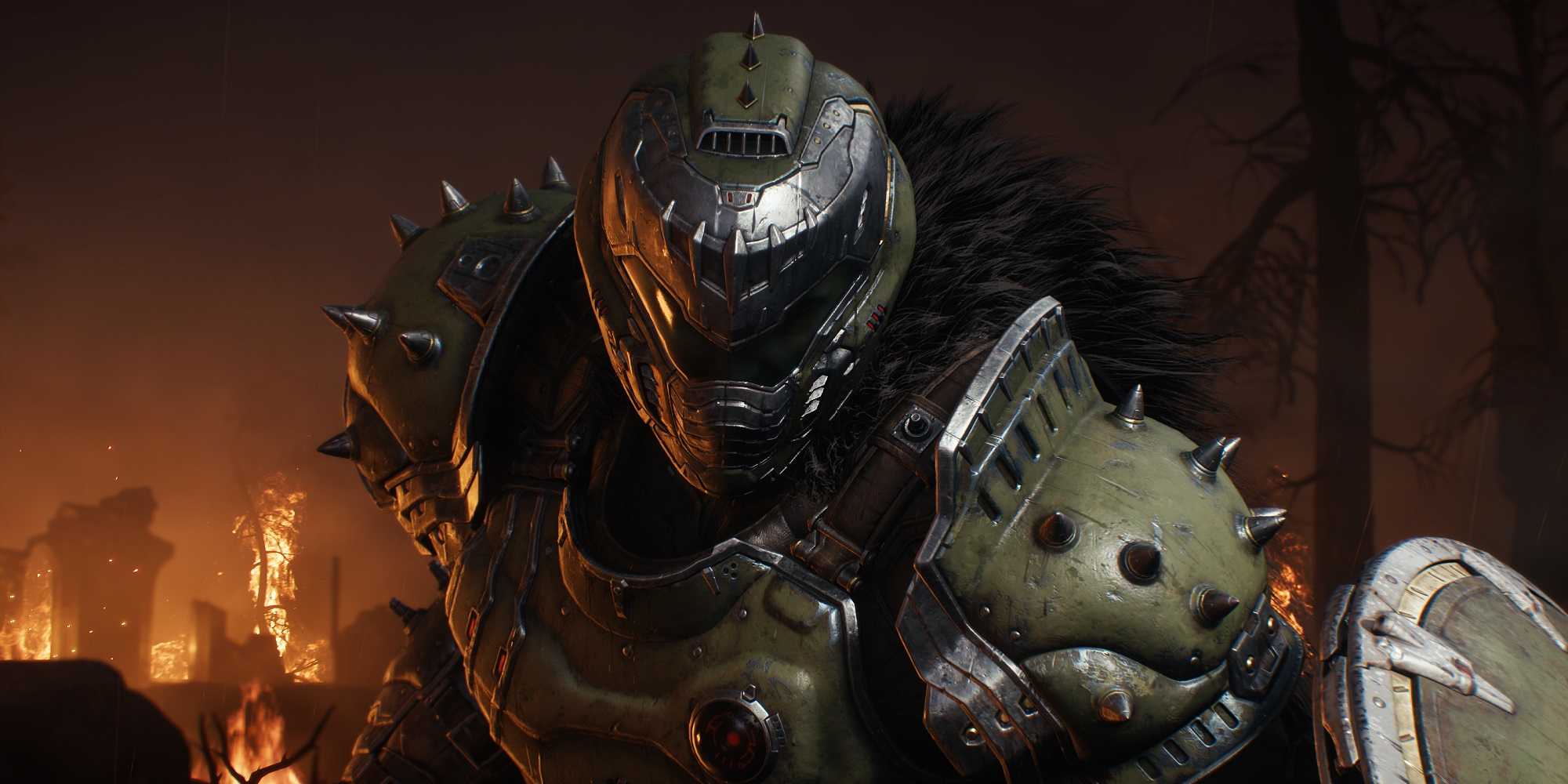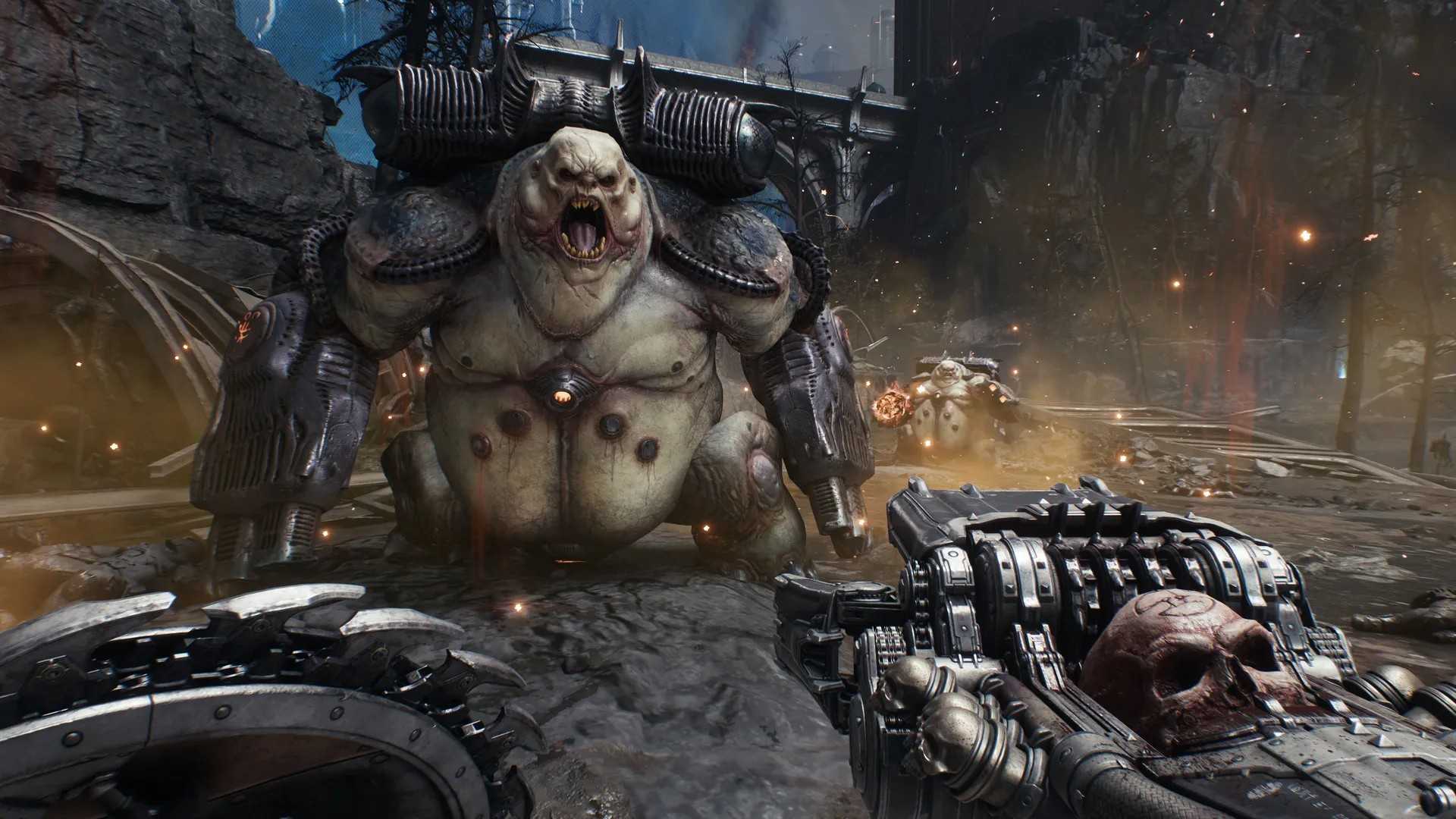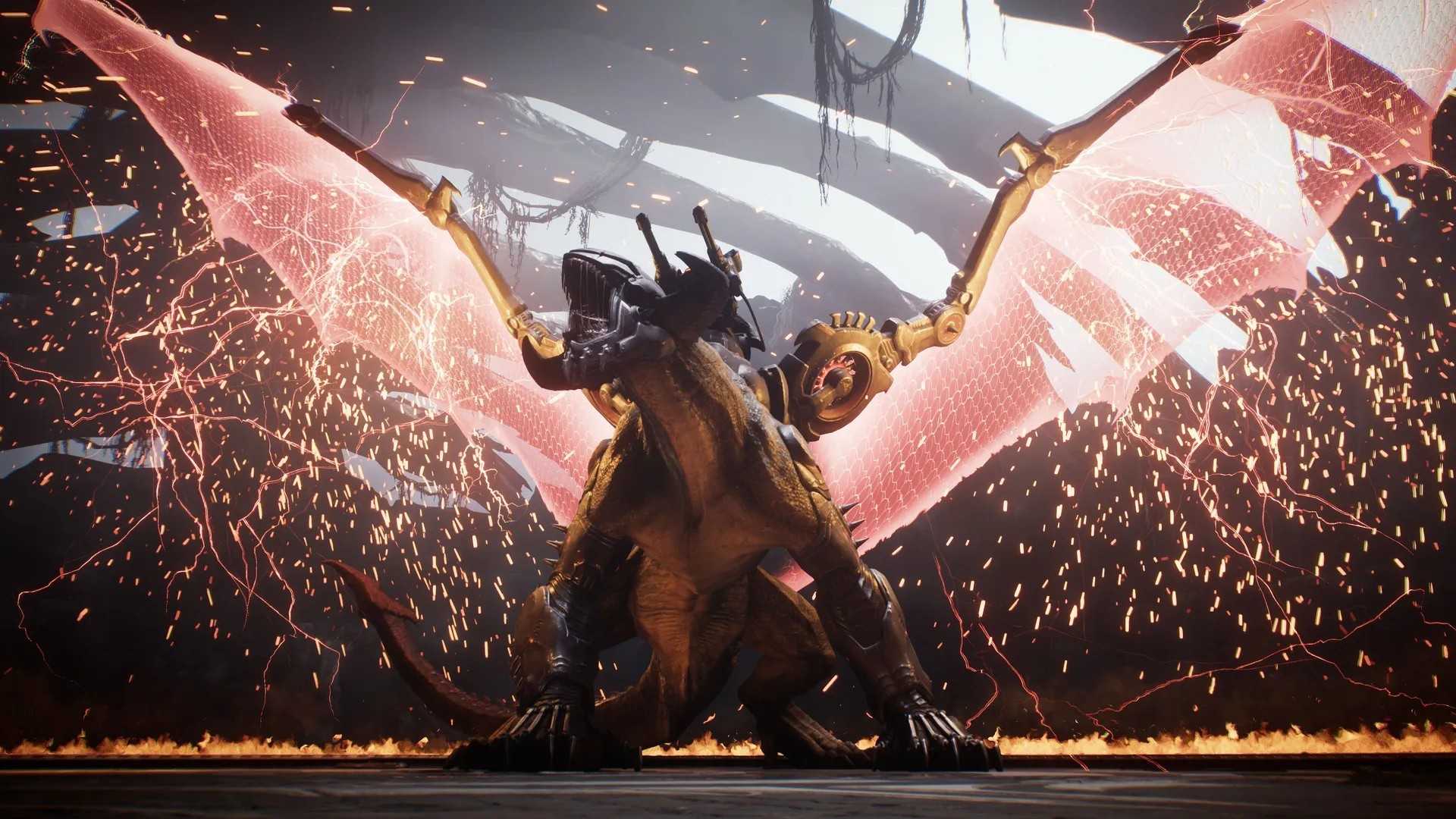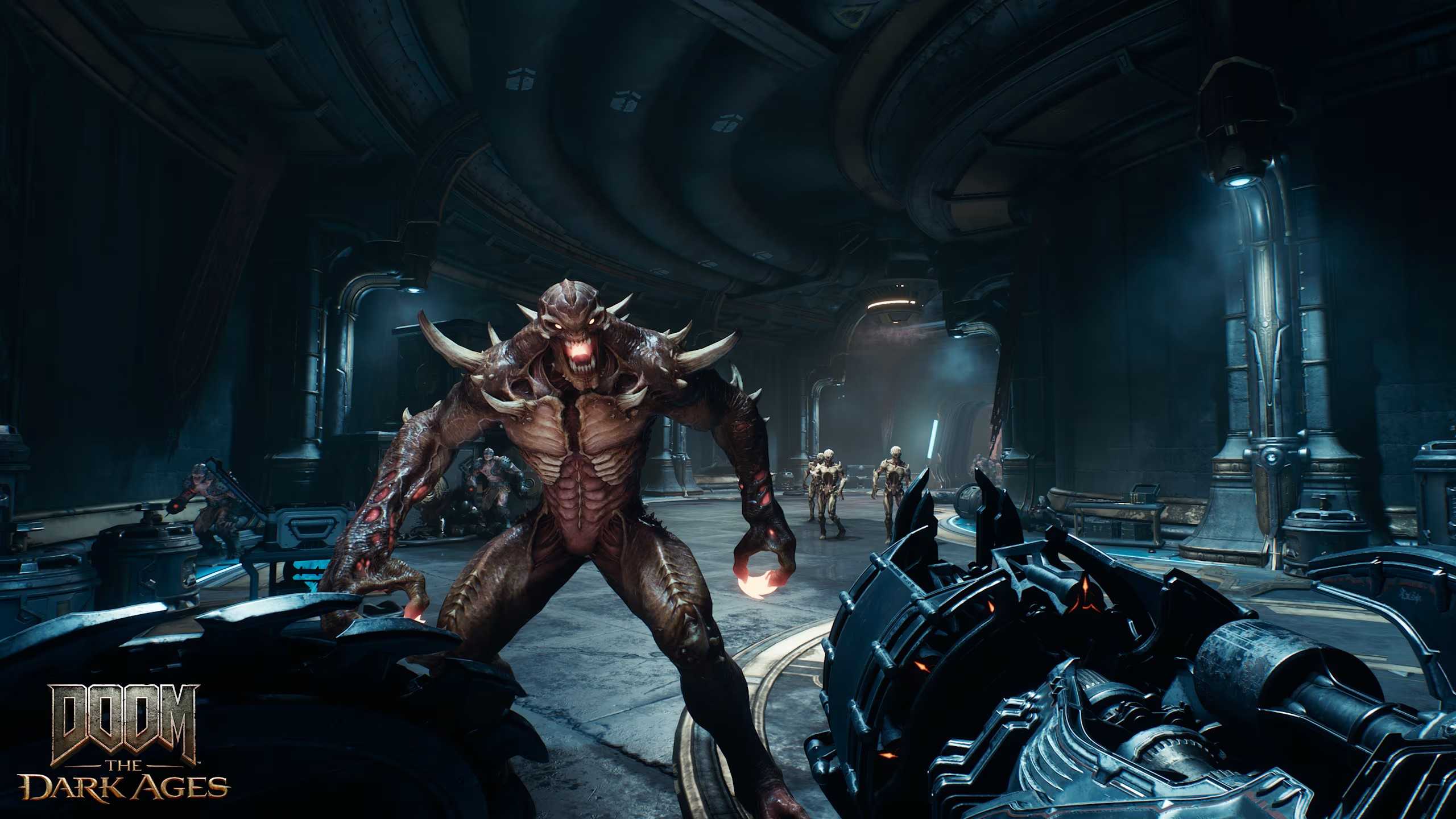Doom: The Dark Ages Review
DOOM: The Dark Ages , the newest installment in gaming's quintessential FPS franchise, is the biggest change of pace in the history of the series. The main factor in this dramatic shift isn't the new medieval setting, or even the addition of flight and mech gameplay. The most extreme difference between The Dark Ages and other Doom titles is that the focus has shifted away from shooting, with timing-based melee combat taking center stage (and absolutely crushing it).
The Slayer Goes Medieval

Doom: The Dark Ages is not the next installment in the series of Doom titles, beginning with 2016's reboot. This is a full-fledged spin-off, sporting a new time period and locations, a larger focus on story-telling (including the addition of non-first person cutscenes) and a heavily revamped combat system. That combat system is heavily based around the Slayer's new (or, perhaps, old) piece of equipment: the Shield.
The Shield is a badass piece of weaponry, capable of a Captain America-style throwing mechanic, powerful shield bashes, latching itself on enemies with a chainsaw installed around the rim, and, most importantly, blocking and parrying enemy attacks. The primary way to defeat enemies in The Dark Ages is by parrying their occasional green-colored attacks, reflecting the force of the attack back at them and stunning them for a chance at dealing extra damage. The parry system is highly responsive and adds a lot of character to the experience, making the player's skill feel recognized and, in turn, making the Slayer feel way more badass.
The epic counters to enemy attacks are just one of the ways this entry depicts the Slayer at his most powerful and intimidating. The new sprint ability gives off heavy momentum, which in turn allows you to leap higher out of a sprint. When jumping from a higher altitude, the slam into the ground is so hard that you can hear it echo across the landscape, producing a shockwave that eviscerates nearby enemies. Even just walking normally, the Slayer will immediately shatter any wooden structures or objects like paper, with physics-enabled scraps falling onto the surrounding ground.
Wielding Ancient Instruments of War

Of course, it's not like guns are out of the picture; they're still the main form of attack for the Slayer. With the techno-medieval setting, certain changes and additions have been made. The Pulverizer is a new gun that grinds up skulls for ammunition, allowing you to fire bone fragments in a wide spray in front of you. This makes clearing out the hordes of low-priority fodder enemies easy, without the need for any kind of precision while running between larger demons.
There's no form of aiming down sights or enemy weak points to focus on, with gunplay taking on a quantity-over-quality approach to landing hits on enemies. There are still hints of the weapon-swapping sensibilities of Doom: Eternal present. Some enemies wield energy shields that can be blown up by energy-based weapons, dealing massive damage to other enemies nearby. Others are equipped with metal shields and armor that can be over-heated by specific ammunition types, making them susceptible to being shattered by a thrown shield, dropping tons of armor pick-ups in the process. The intensity and variety of these combinations are much more toned down than Eternal , making the Slayer feel like the death machine that the legends have actually described him as (and making the experience a lot more of a murder-fest).
The gun mod system from Eternal has been reworked into a gun-swapping mechanic, ditching the replaceable fire modes for the ability to change the weapon into a new gun of the same ammo type on the fly. This makes the weapon wheel much easier to navigate, with six slots holding a total of eleven guns by the end of the campaign. It's a lot less complex than Eternal , prioritizing playstyle choice and freedom over constantly adapting and fine-tuning your weapon to whichever enemy you're focused on taking down.
A Knight and His Loyal Steed

There are two new levels of gameplay in this game as well, with Dragon-mounted exploration and mech-piloting sections sprinkled in throughout the campaign. The Slayer is able to pilot a cybernetically enhanced dragon (who just so happens to be a matching color to the iconic green armor of the protagonist), which can be used to explore certain large-scale levels and take down larger airborne enemies.
The combat with the dragon is simple, swapping out shield-parries for well-timed dodges that overdrive your ranged attacks to break through enemy shields. The most fun is when you aren't locked on to enemies, and are flying freely throughout the level. Collectibles in these sections come in the form of flying enemies that you chase down and fire at in high-speed chases, rewarding you with gold and health if taken down in time. The player lands the dragon at certain locations, seamlessly transitioning back into standard first-person gameplay to complete objectives and explore areas.

The Slayer's Atlan ( The Dark Ages ' term for mech) is a skyscraper-sized walking war machine, taking on equally-gigantic demons with heavy hand-to-hand melee combat. These kaiju-esque battle sequences often lead to massive casualties, with bridges and buildings crumbling around you as ant-sized soldiers (both enemy and friendly) are crushed beneath your boot or thrown off of 200-foot-tall collapsing structures. Of course, there are no repercussions for these casualties, another form of unabashed commitment to an explosive and ultra-violent level of scale and detail.
Even with all of these changes, there's still that classic sense of Doom DNA at the core of the whole experience. The classic maze-like structure of levels has been turned up to eleven, with huge sprawling outdoor stages packed to the brim with hidden passages and interweaving paths full of secrets and encounters. The classic mechanics of health, ammo, and armor pickups remain a core part of staying alive in rooms full of enemies, with plenty of 1-Ups and Soulspheres to track down before harder battles. The aspect of The Dark Ages that is the most loyal to the Doom brand is its constant reinforcement of the franchise's ultra-violent heavy-metal aesthetic, leveling up the Slayer from a badass super-soldier into an ungodly deity of pure destruction that turns fields of enemies into piles of blood and bone with ease, efficiency, and mindless rage.

Closing Comments:
Doom: The Dark Ages is AAA gaming at its best, with huge set pieces and memorable moments around every corner of the beautiful environments that only add to the highly-polished and heavily-addicting gameplay. Id Software hasn't held back any punches in creating one of the most grandiose and large-scale games in recent memory, utilizing their big-budget funding to create a 100% user-focused experience that makes the player feel immensely powerful without forgoing a sense of challenge or difficulty. The classic Doom formula has been deconstructed and reformed into a techno-medieval bloodbath, with gaming's original one-man army going on an unbridled rampage of demon-slaying destruction that somehow tops the scale of the iconic franchise yet again.

Post a Comment for "Doom: The Dark Ages Review"